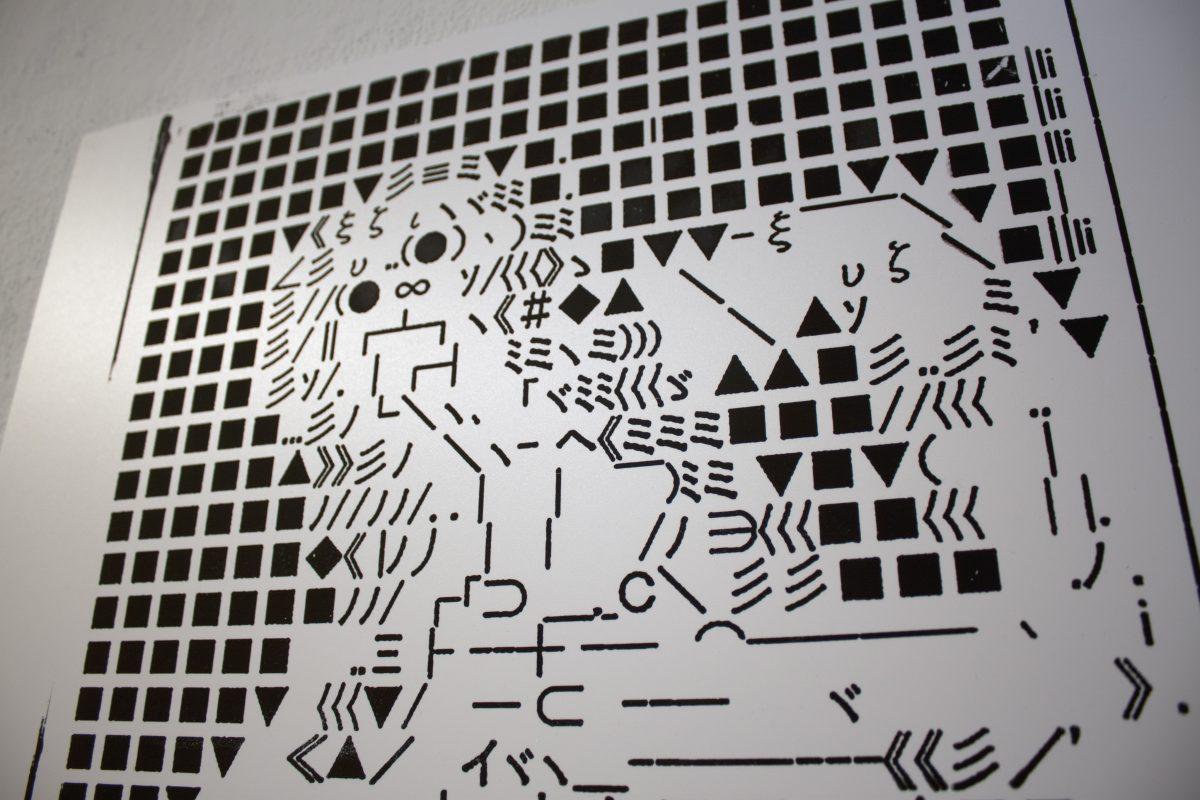The artwork currently lining the walls of the Visual Arts Building looks nothing like usual art museum fare. Instead, five co-curators have collaborated to organize a contemporary statement whose pieces lie outside the realm of preconceived notions of art.
Greg Metz is one of the curators of “Code Yellow” along with five other art professionals. He calls the gallery a kind of “experimental curatorial exercise.”
Metz has brought together the curators — Kael Alford, Janeil Engelstad, Mona Kasra, Laray Polk and Maxmillian Schich— with the idea that there’s a platform all of them could address with their various art disciplines.
“We took a big idea and just tried to interpret it,” Metz said. “We would run things by each other, but we had some good discussions that talked about what impact art is having in social dialogue.”
The curatorial group decided to focus on the idea of vulnerability.
“We all feel vulnerable in some way,” Metz said. “Whether it’s because drones are going to invade our space or having Google listen in on our private conversations, under the guise of democracy. Really, we’re being controlled.”
One of the installations, “N ØTABLE SELFLE$$ AFFECT,” curated by Mona Kastra, is a small television playing a loop of different overlaid videos related to press coverage on Edward Snowden.
Distorted images of Snowden, Barack Obama and Vladimir Putin vie for the whole screen and what results is an eerie mishmash of voices and faces.
On the floor, WikiLeak papers are scattered all around. Metz said they’ve been illegally downloaded.
“It’s a viable communication mechanism for approaching maybe dangerous subject matter or things that we aren’t allowed to talk about,” Metz said.
Elsewhere, prints of political cartoons, 60s rock album covers and illustrations break up white walls as part of “Caveat Emptor,” Metz’s portion of the exhibit.
“Caveat Emptor is sort of political cartoons and commentary,” he said. “A lot of us forget about that as being an art form. They’re kind of visual editorials.”
There are digital versions of works by Spanish artists Fransisco Goya and the first print in the series is a simple illustration with the caption “slide your card, take your pill.”
Images of graphical and statistical data blown up and recontextualized into art adorn the adjacent wall. They’re part of “Didier Sornette: Creepy Figures,” curated by Max Schich.
The images depict data used to predict financial crises and extreme events. When they’re placed on a wall as a statement, the audience is forced to reconsider their meaning, Metz said.
He refers to these images as the warning signs that start to show up in illustrations, map charting and journalistic photography.
“It’s kind of like the canary in the coalmine,” Metz said. “What are the signs? This could be a continuing series recognizing how people are recording what’s going on and how artists are using this as a platform to draw attention to issues.”
“Code Yellow” will run through April 26 in the main gallery of the Visual Arts Building.







